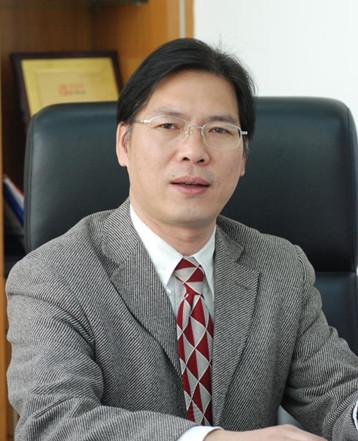
王海洋,437必赢会员中心,437必赢会员中心,二级教授
亚热带农业生物资源保护与利用国家重点实验室华南分室副主任,研究员
Email: whyang@scau.edu.cn
教育经历
1992/09-1998/05,美国密西根大学,分子细胞发育生物学系,博士,导师:John Schiefelbein
1986/09-1989/07,中国西北大学,生物学系,硕士,导师:胡正海
1982/09-1986/07,杭州大学(现浙江大学),生物学系,学士,导师:余象煜
科研与学术工作经历
2016/08-至今, 437必赢会员中心,二级教授
亚热带农业生物资源保护与利用国家重点实验室,研究员
2013/09-2016/07,中国农业科学院生物技术研究所,研究员,玉米功能基因组
创新团队首席科学家
2009/07-2013/09,美国耶鲁大学分子细胞发育生物学系,研究员
2009/07-2013/09,国家作物分子设计工程技术研究中心副主任,研究员(兼)
2002/08-2009/06,美国康乃尔大学 Boyce Thompson植物研究所,助研究员,
独立课题负责人(Principal Investigator), 博导
1998/05-2002/07,美国耶鲁大学分子细胞发育生物学系,博士后,
合作导师邓兴旺
1989/09-1992/07,中国科学院北京植物研究所,助理研究员
奖励与荣誉
2009年入选北京市海聚工程,北京市特聘专家,中关村高端领军人才
2009年入选“湖南省特聘专家”
2015年入选全国农业科研杰出人才
2022年入选广东“特支”杰出人才(南粤百杰)
2023年入选国务院政府特殊津贴专家
学术和社会兼职
“Plant Molecular Biology”副主编
“Seed Biology”副主编
“aBIOTECH”资深编委
“Plant Communications”编委
研究领域和成果
长期从事植物光信号转导和作物理想株型遗传调控网络的研究,是植物光信号和作物株型研究领域的国际知名专家和领军人物之一。入选2022全球前2%顶尖科学家榜单和“ELSEVIER”作物学中国高被引作者榜单。以第一作者或通讯作者在国际顶尖学术刊物Science和Nature发表研究论文4篇,在其他国际知名刊物发表研究论文150余篇,开发了第三代杂交水稻育种技术和单倍体介导的基因编辑技术,可大大加速作物育种进程。一项研究成果被评为“2014年中国科学十大进展”,一项成果被评为2019年度“中国农业科学重大进展”,两项成果被评为2020年度“中国植物科学30项代表性重大成果”,十项工作被F1000评述为本领域必读论文。培养学生和博士后中6人分别入选教育部长江特聘教授、国家基金委杰青和优青、科技部万人计划领军人才和青年千人计划。
主持或参加科研项目(课题)(在研)
1. 主持国家科技部“十四五”重点研发项目“玉米高产优质性状形成的分子调控网络及其协同改良机制”(项目总经费,7000万元,执行期限: 2021/12-2026-11);
2. 主持国家自然基金创新群体项目“籼粳亚种间杂种优势利用”(项目总经费,1050万元,执行期限:2020/01-2024/12);
3. 主持国家自然基金委重点项目“玉米避荫反应和耐密株型调控网络解析”(项目总经费:282万元,执行期限2022/01-2026/12/);
4. 主持广东省重点领域研发计划项目“粮油作物多组学育种技术原始创新与重大品种选育”(项目总经费:1500万元,执行期限2022/01-2026/12);
5. 主持海南省科技厅崖州湾国家种子实验室重点项目“高产优质抗逆新基因挖掘与突破性种质资源创新”(500万元,执行期限2021/01-2023/12 );
6. 主持广东省教育厅高水平大学建设项目“籼粳亚种间杂种优势利用关键性状分子遗传基础”(500 万元,执行期限2019/05-2022/04);
7. 作为课题负责人参与刘耀光院士主持的广东省基础与应用基础研究重大项目“水稻高产优质关键性状的分子机理解析及种质创新”(项目总经费4475万元,本人为课题负责人,课题经费358万元,执行期限2020/01-2025/12);
8. 作为课题负责人参与刘耀光院士主持广东省岭南现代种业与生物技术实验室重点项目“南方主要作物高产优质关键性状的分子基础和基因工程育种技术”(项目总经费1500万元,本人为课题负责人,课题经费250万元,执行期限2021/08-2023/07)。
主持或参加科研项目(课题)(已结题)
1. 主持国家自然基金委-广东联合基金重点项目,U1701232“水稻株型与粒宽关键调控基因的功能与分子机理研究”(项目总经费:270万元,执行期限2018/01-2021/12);
2. 主持国家科技部十三五国家重点研发计划项目“小麦等作物功能基因组研究与应用”,“课题1“作物规模化基因鉴定与基因组育种技术平台”(课题总经费:805万元,执行期限2016/07-2020/12);
3. 主持国家自然科学基金重点项目,31430008,植物生物钟核心基因CCA1表达调控的分子机理研究(执行期限2015/01-2019/12,345万元);
4. 参加国家高技术研究发展计划(863计划), 2011AA10A107, 水稻智能不育系的创制与应用,2011/01-2015/12,1343万元,已结题,子课题负责人;
5.参加湖南省科技重大专项,2009fj1012,超级杂交稻分子育种研究,2009/01-2011/12, 690 万元,已结题,课题负责人;
6. 参加国家高技术研究发展计划(863计划),2009AA101201,水稻智能不育分子设计技术研究及新型不育系的创制,2009/11-2010/12,2600万元,课题负责人。
主持美国国家自然科学基金(已结题)
1. 美国国家自然科学基金(NSS,IOS-1026630),ELF4基因表达和生物钟节律的转录调控,2010/09-2014/08, 672,882美元,已结题,主持;
2. 美国国家自然科学基金(NSF, MCB-074606),可逆磷酸化修饰调控拟南芥HFR1蛋白功能的机理研究,2008/05-2012/04,499,849美元, 已结题,主持;
3.美国国家自然科学基金(NSF,IOS-0641639),FHY3和FAR1蛋白在拟南芥光敏色素A信号途径中转录调控作用机理的研究:2007/06-2010/05, 420,000 美元, 已结题,主持;
4.美国国家自然科学基金(NSF, MCB-042032),拟南芥光信号途径中HFR1功能的调控机理研究,2004/09-2008/08,339,322美元, 已结题,主持;
5.美国国家自然科学基金(NSF, DBI-0500689),联合利用混合四极TOF串联质谱和UPLC进行蛋白质复合体分析和比较蛋白质组学研究,2005/09-2009/08,348,632美元, 已结题,共同主持。
代表性论文(*通讯或共同通讯作者)
玉米功能基因组与杂种优势研究领域
1. Wang, B., Hou, M., Shi, J., Ku, L., Song, W., Li, C., Ning, Q., Li, X., Li, C., Zhao, B., Zhang, R., Xu, H., Bai, Z., Xia, Z., Wang, H., Kong, D., Wei, H., Jing, Y., Dai, Z., Wang, H.H., Zhu, X., Li, C., Sun, X., Wang, S., Yao, W., Hou, G., Qi, Z., Dai, H., Li, X., Zheng, H., Zhang, Z., Li, Y., Wang, T., Jiang, T., Wan, Z., Chen*, Y., Zhao*, J., Lai*, J., Wang*, H. (2023). De NovoGenome Assembly and Analyses of Twelve Founder Inbred Lines Provide Insights into Maize Heterotic Groups and Heterosis. Nature Genetics 55(2):312-323.
2. Zhao Y, Zhao B, Xie Y, Jia H, Li Y, Xu M, Wu G, Ma X, Li Q, Hou M, Li C, Xia Z, He G, Xu H, Bai Z, Kong D, Zheng Z, Liu Q, Liu Y, Zhong J, Tian F, Wang B, Wang*, H.(2023). The evening complex promotes maize flowering and adaptation to temperate regions.Plant Cell 35(1):369-389.
Wang*, H. (2023). UB2/UB3/TSH4-anchored transcriptional networks regulate early maize inflorescence development in response to simulated shade.Plant Cell 35(2):717-737.
Wang*, H.Local auxin biosynthesis regulates brace root angle and lodging resistance in maize.New Phytol. 238(1):142-154.
5. Li, C., Guan, H., Jing, X., Li, Y., Wang, B., Li, Y., Liu, X., Zhang, D., Liu, C., Xie, X., Zhao, H., Wang, Y., Liu, J., Zhang, P., Hu, G., Li, G., Li, S., Sun, D., Wang, X, Shi, Y., Song, Y., Jiao, C., Ross-Ibarra*, J., Li*, Y., Wang*, T., Wang*, H. (2022). Genomic insights into historical improvement of heterotic groups during modern hybrid maize breeding. Nature Plants 8(7):750-763. doi: 10.1038/s41477-022-01190-2. Epub 2022 Jul 18.
Wang*, H.Overexpression of ZmSPL12 confers enhanced lodging resistance through transcriptional regulation of D1 in maize.Plant Biotechnol J. 20(4):622-624.
Wang*, H.ZmSPL10/14/26 are required for epidermal hair cell fate specification on maize leaf.New Phytol. 230(4):1533-1549.
Wang*, H.DWARF53 interacts with transcription factors UB2/UB3/TSH4 to regulate maize tillering and tassel branching.Plant Physiol. 187(2):947-962.
9. Wang B, Lin Z, Li X, Zhao Y, Zhao B, Wu G, Ma X, Wang H, Xie Y, Li Q, Song G, Kong D, Zheng Z, Wei H, Shen R, Wu H, Chen C, Meng Z, Wang T, Li Y, Li X, Chen Y, Lai J, Hufford MB, Ross-Ibarra J, He* H, Wang* H. (2020).Genome-wide selection and genetic improvement during modern maize breeding.Nature Genetics 52(6):565-571.
10. Wang*, H.The retromer protein ZmVPS29 regulates maize kernel morphology likely through an auxin-dependent process(es).Plant Biotechnol J. 18(4):1004-1014.
Wang*, H.CRISPR/Cas9-mediated knockout and overexpression studies reveal a role of maize phytochrome C in regulating flowering time and plant height.Plant Biotechnol J. 18(12):2520-2532.
Wang*, H.. Characterization of Maize Phytochrome-Interacting Factors in Light Signaling and Photomorphogenesis.Plant Physiol. 181(2):789-803.
水稻功能基因组与籼粳亚种间杂种优势利用研究领域
Wang*, H.Targeted manipulation of grain shape genes effectively improves outcrossing rate and hybrid seed production in rice.Plant Biotechnol J. 21(2):381-390.
Wang*, H.BRASSINOSTEROID-SIGNALING KINASE1-1, a positive regulator of brassinosteroid signalling, modulates plant architecture and grain size in rice.J Exp Bot. 74(1):283-295.
3. Wang*, H.Auxin regulates source-sink carbohydrate partitioning and reproductive organ development in rice.Proc Natl Acad Sci U S A. 119(36):e2121671119.
Wang, H.The APC/CTE E3 Ubiquitin Ligase Complex Mediates the Antagonistic Regulation of Root Growth and Tillering by ABA and GA.Plant Cell 32(6):1973-1987.
Wang, H.OsSHI1 Regulates Plant Architecture Through Modulating the Transcriptional Activity of IPA1 in Rice.Plant Cell 31(5):1026-1042.
Post-transcriptional regulation of Ghd7 protein stability by phytochrome and OsGI in photoperiodic control of flowering in rice.New Phytol. 224(1):306-320.
7. Yu, X., Zhao, Z., Zheng, X., Zhou, J., Kong, W., Wang, P., Bai, W., Zheng, H., Zhang, H., Li, J., Liu, J., Wang, Q., Zhang, L., Liu, K., Yu, Y., Gui, X., Wang, J., Lin, Q., Wu, F., Ren, Y., Zhu, S., Zhang, X., Cheng, Z., Lei, C., Liu S., Tian, Y., Jiang, L., Ge, S., Wu*., C., Tao*, D., Wang*, H., Wan*, J. (2018). A selfish genetic element confers non-899 Mendelian inheritance in rice. Science 360, 1130-1132.
The SnRK2-APC/C(TE) regulatory module mediates the antagonistic action of gibberellic acid and abscisic acid pathways.Nat Commun. 6:7981.
A gene cluster encoding lectin receptor kinases confers broad-spectrum and durable insect resistance in rice.Nat Biotechnol. 33(3):301-5.
STV11 encodes a sulphotransferase and confers durable resistance to rice stripe virus.Nat Commun. 5:4768.
Wang*, H.D14-SCF(D3)-dependent degradation of D53 regulates strigolactone signalling.Nature 504(7480):406-10.
Wang*, H.A role for a dioxygenase in auxin metabolism and reproductive development in rice.Dev Cell. 27(1):113-22.
Wang*, H.Association of functional nucleotide polymorphisms at DTH2 with the northward expansion of rice cultivation in Asia.Proc Natl Acad Sci U S A. 110(8):2775-80.
Rice APC/C(TE) controls tillering by mediating the degradation of MONOCULM 1.Nat Commun. 3:752.
植物光信号转导研究领域
Wang*, H. (2020). Arabidopsis FHY3 and FAR1 integrate light and strigolactone signaling to regulate branching.Nat Commun. 11(1):1955.
Wang*, HTranscription Factors FHY3 and FAR1 Regulate Light-Induced CIRCADIAN CLOCK ASSOCIATED1 Gene Expression in Arabidopsis.Plant Cell 32(5):1464-1478.
3. Wang*, H. (2020). FHY3 and FAR1 Integrate Light Signals with the miR156-SPL Module-Mediated Aging Pathway to Regulate Arabidopsis Flowering.Mol Plant 13(3):483-498.
Wang*, H.Phytochrome-interacting factors directly suppress MIR156 expression to enhance shade-avoidance syndrome in Arabidopsis.Nat Commun. 8(1):348.
Wang*, H. (2019). Arabidopsis FHY3 and FAR1 Regulate the Balance between Growth and Defense Responses under Shade Conditions.Plant Cell 31(9):2089-2106.
Plant Cell 29(9):2269-2284.
Wang*, HCoordinated transcriptional regulation underlying the circadian clock in Arabidopsis.Nat Cell Biol. 13(5):616-22.
Wang*, H. (2008). Multisite phosphorylation of Arabidopsis HFR1 by casein kinase II and a plausible role in regulating its degradation rate.J Biol Chem. 283(34):23264-73.
Wang*, H.Transposase-derived transcription factors regulate light signaling in Arabidopsis.Science 318(5854):1302-5.
Wang*, HRepression of light signaling by Arabidopsis SPA1 involves post-translational regulation of HFR1 protein accumulation.Plant J. 43(1):131-41.
Wang*, H.Light regulates COP1-mediated degradation of HFR1, a transcription factor essential for light signaling in Arabidopsis.Plant Cell 17(3):804-21.
Arabidopsis FHY3 defines a key phytochrome A signaling component directly interacting with its homologous partner FAR1.EMBO J. 21(6):1339-49.
Analysis of far-red light-regulated genome expression profiles of phytochrome A pathway mutants in Arabidopsis.Plant J. 2002 Dec;32(5):723-33.
生物育种技术研究领域
1. Wang*, B., Zhu, L., Zhao, B., Zhao, Y., Xie, Y., Zheng, Z., Li, Y., Sun, J., Wang*, H. (2019). Development of a Haploid-Inducer Mediated Genome Editing System for Accelerating Maize Breeding. Mol Plant12(4):597-602.
Wang*Development of the Third-Generation Hybrid Rice in China.Genomics Proteomics Bioinformatics. 16(6):393-396.
受邀撰写综述和评论
Plant Biotechnol J. 20(3):426-436.
Wang*Integration of light and hormone signaling pathways in the regulation of plant shade avoidance syndrome.aBIOTECH 2(2):131-145.
Wang*Light Regulation of Stomatal Development and Patterning: Shifting the Paradigm from Arabidopsis to Grasses.Plant Commun. 1(2):100030.
4. Wang*SMXL6/7/8: Dual-Function Transcriptional Repressors of Strigolactone Signaling.Mol Plant 13(9):1244-1246.
5. Wang* (2020). UPA2 and ZmRAVL1: Promising targets of genetic improvement of maize plant architecture.J Integr Plant Biol. 62(4):394-397.
6. Wei H, Zhao Y, Xie Y, Wang* (2018). Exploiting SPL genes to improve maize plant architecture tailored for high-density planting.J Exp Bot. 69(20):4675-4688.
Wang*IPA1: A New Green Revolution Gene?Mol Plant 10(6):779-781.
8. Wang H, Wang* H. (2015). Phytochrome signaling: time to tighten up the loose ends.Mol Plant 8(4):540-51.
Wang*Multifaceted roles of FHY3 and FAR1 in light signaling and beyond.Trends Plant Sci. 20(7):453-61.
Wang*The miR156/SPL Module, a Regulatory Hub and Versatile Toolbox, Gears up Crops for Enhanced Agronomic Traits.Mol Plant 8(5):677-88.


